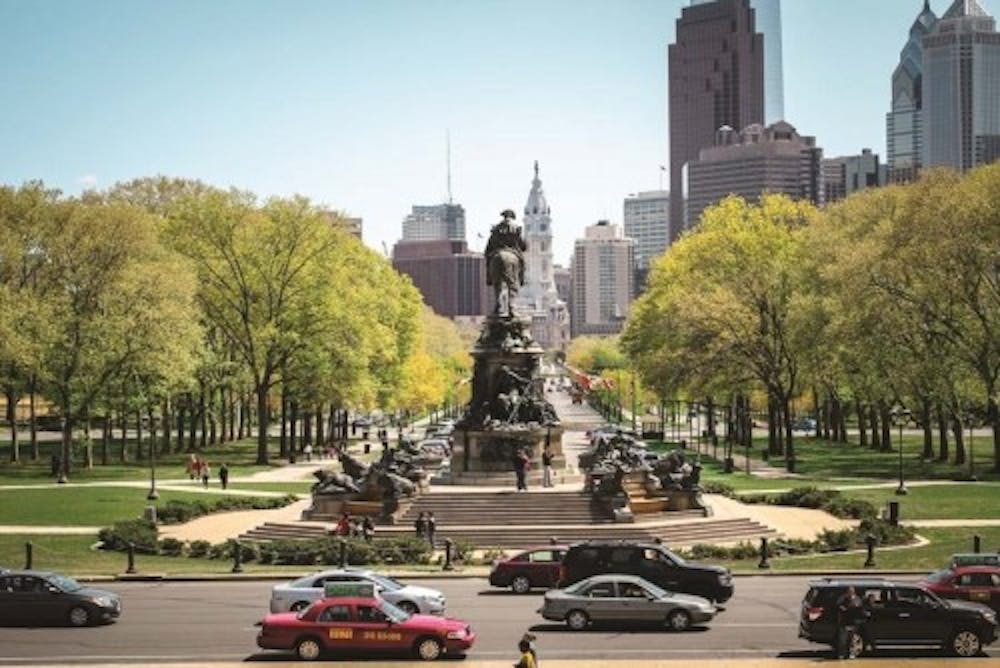Philadelphia: home of the Eagles, the Liberty Bell, and the good old Philly cheesesteak. What doesn’t come to mind, though, are the many art museums and cultural institutions that are responsible for the city's ranking as number one in its amount of outdoor sculptures and murals. These museums and institutions are precisely what make up the long grove that is the Benjamin Franklin Parkway, the epitome of the arts culture in Philadelphia.
Created in the beginning of the 20th century, the Parkway was the result of an effort meant to deindustrialize the industrial city. Prior to this, Philadelphia was the nation’s leading textile manufacturer, prompting the city to sprawl with well–oiled factories and water mills. In many ways, it was merely an efficient, rational checkerboard. Input. Output. And that was that. But before long, as the end of the industrial age came with the manufacturing economy shifting towards a service–oriented one, workers left, but the gray dreariness of the factories remained. The city was still defined by manufacture, even though it didn’t want to be anymore.
So came the Parkway. To install such a thing would be to counter the grays and blacks that coated the buildings. Stretching from Logan Circle to the Philadelphia Museum of Art today, the Benjamin Franklin Parkway adds a splash of color with its combination of museums and green landscapes so unlike the colorless city before.
History of Art Professor David Brownlee has spent decades researching the history of the city and the building of the parkway. Among his recent works are a book and a documentary circling the heritage of the city. In remembering the very beginnings of the parkway, he describes it as a “marvelous place.” Even from a young age, “my memories as a little boy driving into the city with my parents and first visiting these impressive museums were so intense.”
As the city changed, Penn changed with it. The Penn Museum was built. Talks began of moving its architecture school closer to the Parkway (though nothing really came out of those talks). The very fact that it stayed at its location rather than Valley Forge, a suburb west of Philly, meant that it was choosing to serve the city in its artistic ventures rather than deserting it.
This is why art in Philly exists — why art at Penn exists. Rather than serving as merely a center of manufacture, Philly should and does serve as an artistic and cultural center, the result of a long and arduous process of city planning.
It is because of this planning that we get to see a Monet at Barnes Foundation or watch a play in Rittenhouse Square. Seeing different sides of Philly that we never run into when we’re on campus is refreshing and rewarding. We get to know Philly better as a city and infuse other vibes into our campus. Between the Historic District and Center City, the arts and culture scenes are a breath of fresh air that breaks the Penn Bubble so many find themselves trapped in.

